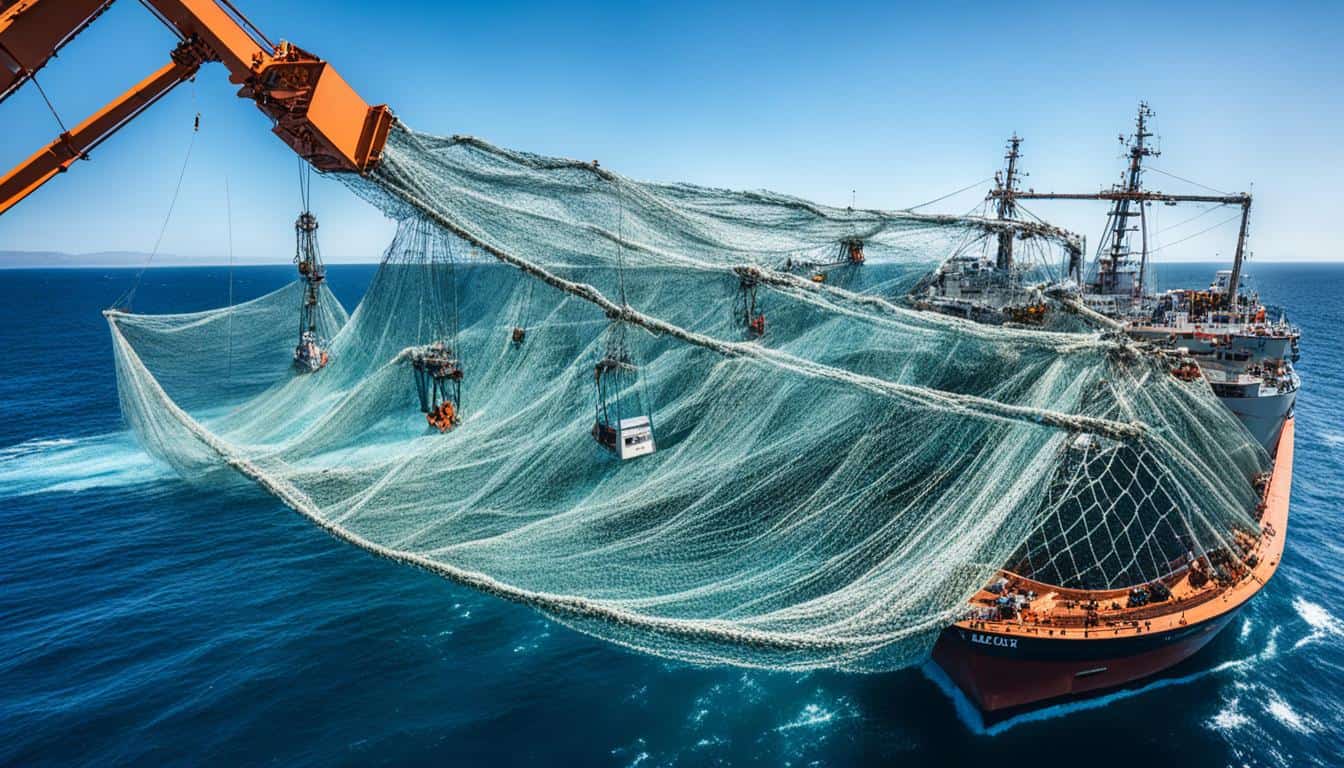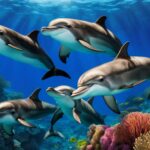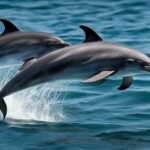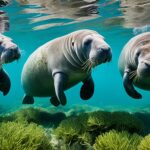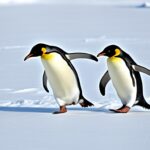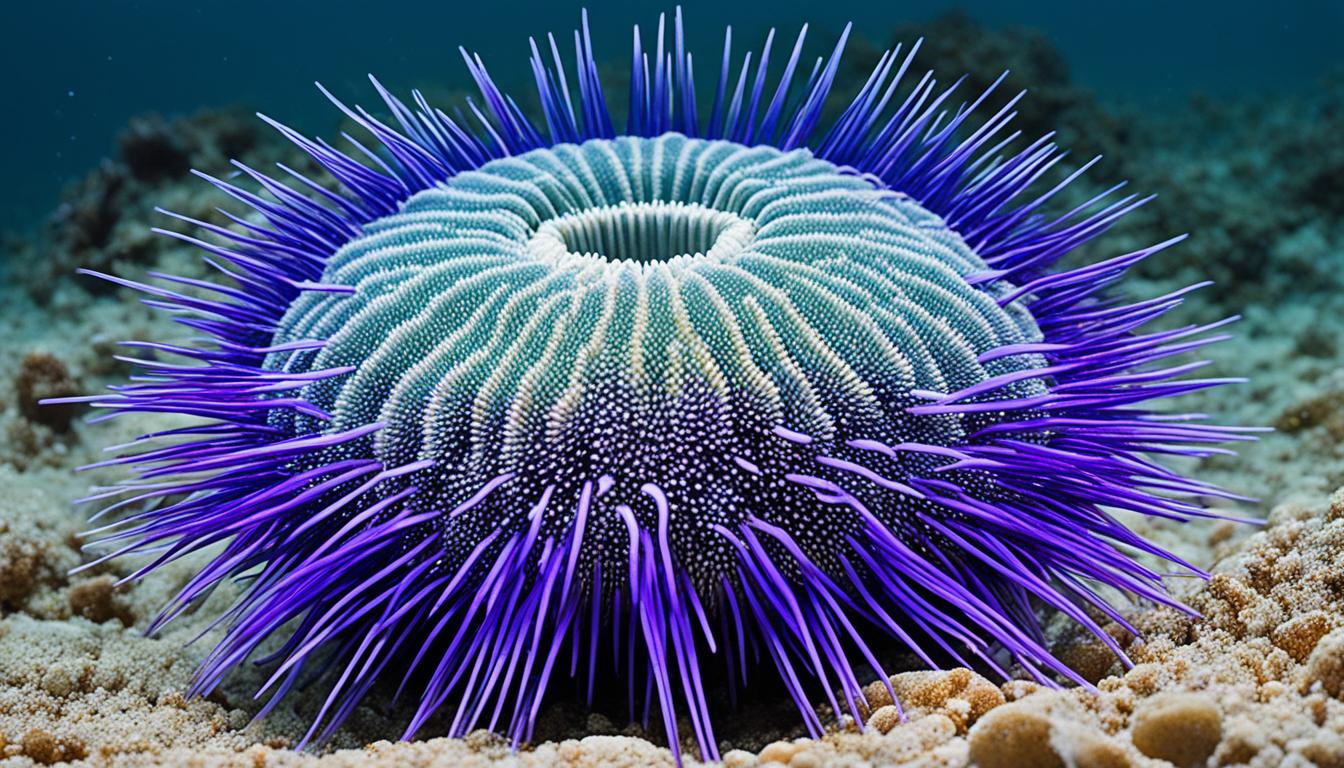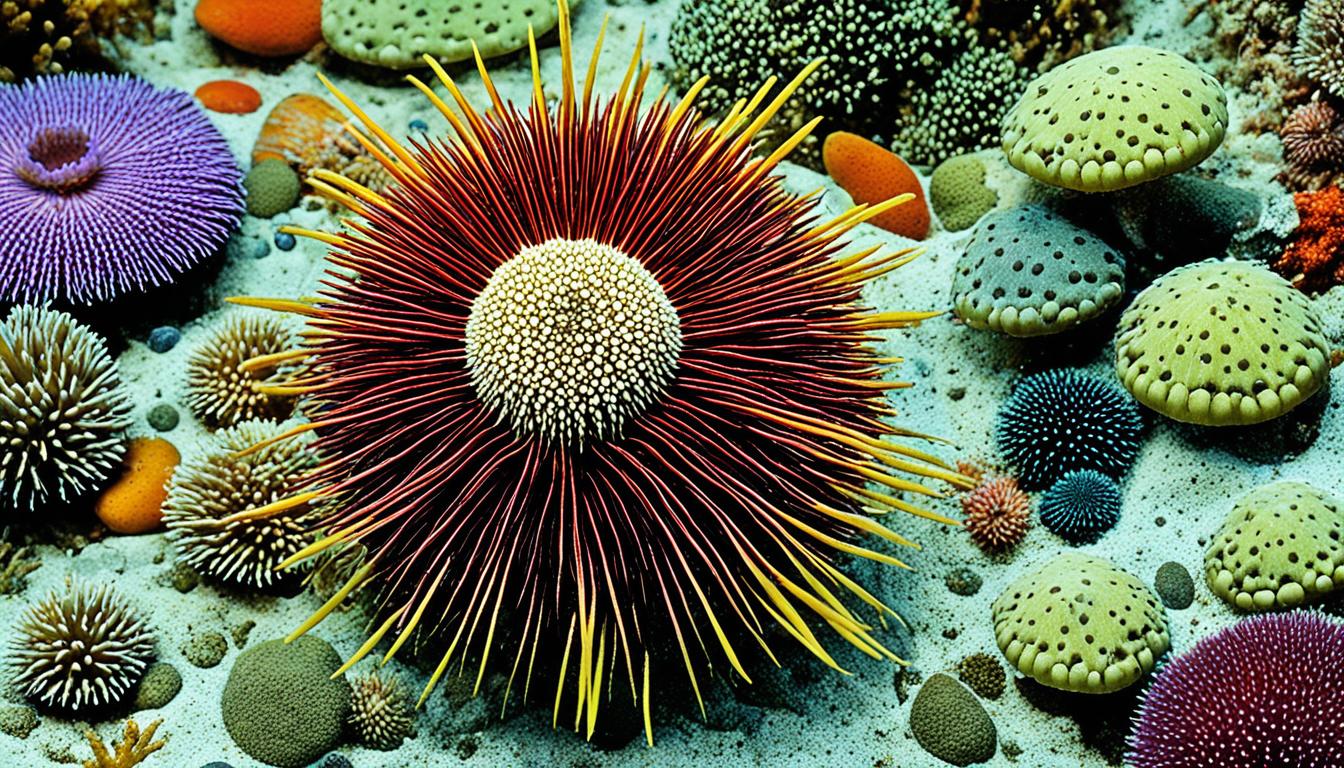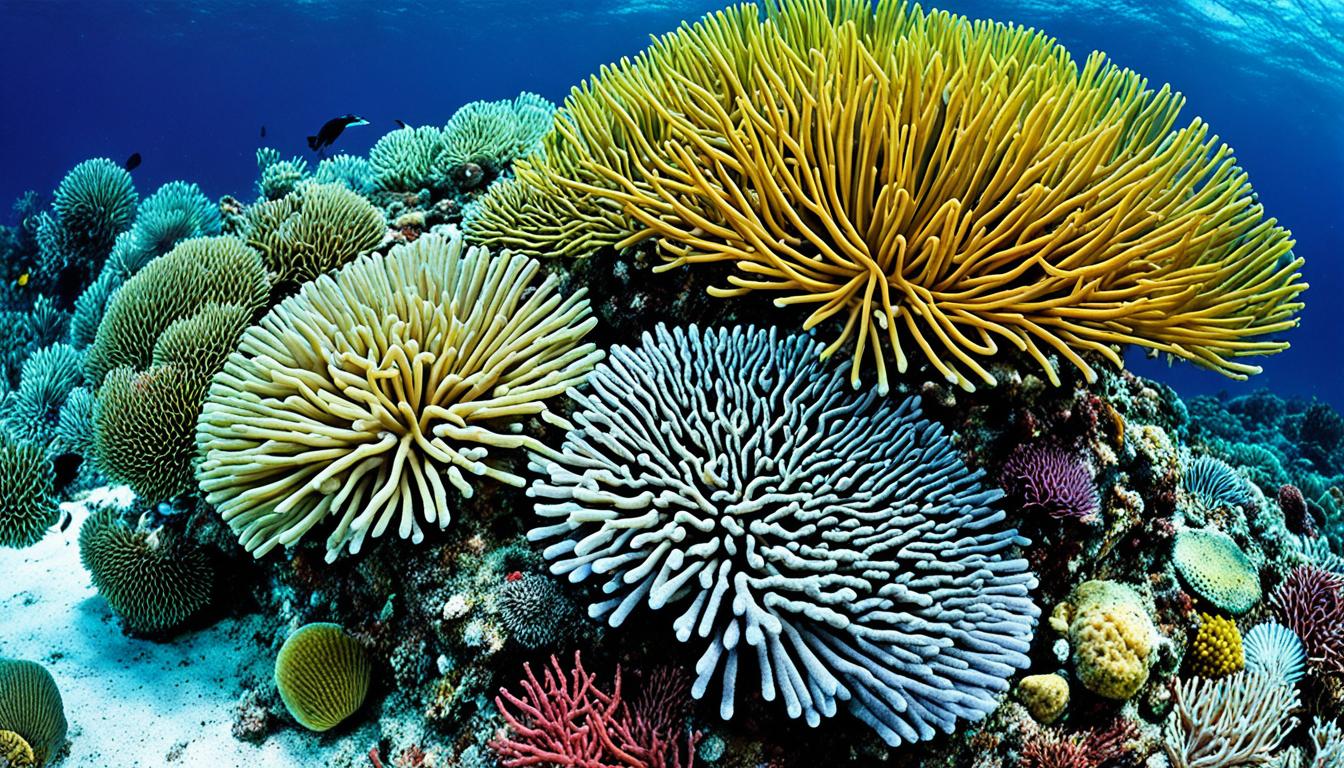Learning how humans harvest krill is key to understanding their importance in our ecosystem and economy. Most of the time, humans go after Antarctic krill (Euphausia superba) and North Pacific krill (E. pacifica). They catch between 150,000 to 200,000 tonnes every year. This shows how big the krill population is, with 379 million tonnes of Antarctic krill alone.
Most of the krill caught is used for fish food and bait. A small part is made for people to eat. As we dive deeper, you’ll see how new technologies help catch more krill but also bring up questions about sustainable fishing and the environment.
The Importance of Krill in the Marine Ecosystem
Krill play a big role in the ocean’s balance. They are key to keeping many marine species alive. These small crustaceans are crucial for the health of the ocean.
Krill as a Keystone Species
Krill are vital because they feed many marine animals. They help control the numbers of whales, seals, and penguins. Without them, the ocean’s balance would be upset, affecting many other species.
Global Biomass and Distribution
In the Antarctic, krill numbers are huge, around 300 to 379 million tonnes. This shows how important they are. They help with feeding and nutrient cycling in the ocean.
Their wide spread in the Southern Ocean supports many marine species. Krill are key to a healthy ocean.
How are krill harvested by humans?
Krill harvesting has changed a lot over the years. Early on, big trawlers were used, which hurt the ocean. Now, we focus on sustainable ways to catch krill. This keeps krill populations and their homes healthy.
Overview of Krill Harvesting Practices
Now, we use fine-meshed nets to catch krill. These nets help avoid catching other sea creatures. It’s important to manage krill fishing right to keep the ocean in balance. Rules and guidelines help us fish responsibly.
Commercial and Sustainable Practices
Commercial fishing for krill follows strict rules to balance the need for food with protecting the ocean. These rules help keep krill numbers stable. By following these rules, we can avoid overfishing and protect the food web.
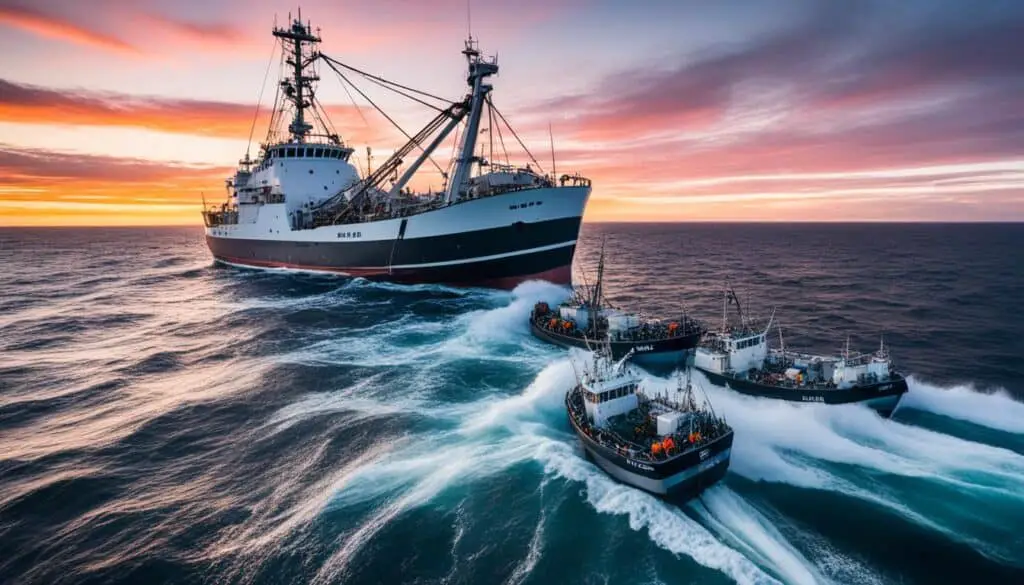
| Practice Type | Description | Impact on Ecosystem |
|---|---|---|
| Commercial Krill Fishing | Utilizes large vessels and fine-meshed nets | Can lead to overfishing if not managed |
| Sustainable Krill Fishing Practices | Involves regulated catch quotas and eco-friendly methods | Supports ecological balance and krill population stability |
Krill Harvesting Technologies
Advanced technologies are key to efficient krill harvesting. They help catch more krill while protecting the ocean. The fishing industry has seen big changes, bringing new tools and methods. These changes help us fish in a way that keeps the ocean healthy and ensures krill is available for the future.
Innovative Fishing Equipment
Modern krill fishing uses top-notch equipment made for krill. The main improvements include:
- Specialized Trawl Nets: These nets catch krill without harming other sea creatures or the ocean.
- Pumping Systems: These systems take krill out of nets without losing water, saving resources.
- Electronic Monitoring: These systems track where krill are found and how they are caught, helping us manage the fishery better.
Processing Technologies
After catching krill, it must be processed fast to keep it fresh. New ways to process krill have been developed for this. Key points are:
- Pre-Freezing Methods: These methods keep krill fresh right after catching, stopping spoilage.
- Automated Processing Lines: These lines make cleaning and packing krill faster and more efficient.
- Quality Control Measures: These systems check that the krill is safe and meets quality standards.
| Technology Type | Description | Benefits |
|---|---|---|
| Specialized Trawl Nets | Designed to reduce bycatch while optimizing krill catch. | Minimizes environmental impact and increases efficiency. |
| Pumping Systems | Extracts krill directly from water, reducing liquid loss. | Enhances overall catch yield and preserves product quality. |
| Automated Processing Lines | Simplifies cleaning and packing of harvested krill. | Improves speed and efficiency in processing operations. |
Using these new fishing and processing technologies is a big step towards a sustainable future for using the ocean’s resources.
Regulations and Ethical Considerations in Krill Fishing
It’s vital to know the rules for krill fishing to make sure it’s done right. The Commission for the Conservation of Antarctic Marine Living Resources (CCAMLR) is key in this area. CCAMLR sets strict rules for krill fishing to protect marine life and keep the Antarctic ecosystem balanced.
The Role of CCAMLR
CCAMLR started in 1982 and focuses on saving Antarctic marine resources. It sets catch limits based on science to manage krill fishing well. By picking fishing spots and setting seasons, CCAMLR keeps krill numbers stable and helps other sea creatures that eat krill.
Ethical Harvesting Practices
Following ethical krill fishing rules is crucial for keeping this industry sustainable. New rules require all krill fishing boats to have observers on board. This makes fishing open and responsible. It helps reduce harm to the environment and meets the high standards that people expect from seafood.
| Aspect | CCAMLR Regulation | Impact |
|---|---|---|
| Catch Limits | Strict limits based on research | Maintains krill populations |
| Observer Coverage | 100% observer coverage mandated | Enhances compliance and transparency |
| Fishing Areas | Designated specific areas for fishing | Protects marine habitats |
| Seasonal Restrictions | Regulated fishing seasons | Allows for population recovery |
The Future of Krill Harvesting
The future of krill harvesting is at a crossroads due to climate change and high demand for krill products. Rising global temperatures and changes in ocean ecosystems affect krill populations. It’s crucial to understand these impacts and the need for a balanced marine environment.
Now, focusing on sustainable krill fishing is key. Fisheries and researchers are working hard to make sure krill harvesting doesn’t harm marine life. By using new technology and following rules from groups like CCAMLR and the Marine Stewardship Council, we can fish responsibly and still make a profit.
Using better technology in harvesting is a step towards a better future for krill. New equipment and green processing methods reduce harm to the environment and help krill populations recover. By choosing sustainable practices, you help the ocean and support the industry’s success.
FAQ
How are krill harvested by humans?
Humans harvest krill using large nets on stern trawlers. This method started in the 1960s. Now, we focus on reducing bycatch and protecting the environment by following fishing rules.
What are the key methods used for krill harvesting?
Krill are caught with special nets that help reduce bycatch. New pumping techniques also make catching krill more efficient. These methods help keep harvesting sustainable and protect the environment.
Why are krill considered a keystone species?
Krill are key to the Antarctic food web. They feed many marine animals like whales, seals, and penguins. Their numbers affect nutrient cycles and support the ecosystem.
What are the total annual harvest levels of krill globally?
Every year, we catch between 150,000 to 200,000 tonnes of krill. Most goes to aquaculture feed and fish bait. A bit is used for people to eat.
How do regulations impact krill harvesting?
Rules set by the CCAMLR help make krill fishing sustainable. They limit how much can be caught and where. This protects the Antarctic ecosystem and prevents overfishing.
What technologies are employed in the processing of krill?
New tech is key to keeping krill fresh. It must be processed quickly after catching. Good processing keeps the product quality high.
What are sustainable krill fishing practices?
Sustainable fishing means following catch limits and managing krill populations. It also means using ethical and innovative methods. This approach protects krill and marine life for the future.
How does climate change affect krill harvesting?
Climate change hurts krill by changing their numbers and homes. The growing demand for krill products makes sustainable fishing even more important. It’s a challenge to balance the environment with economic needs.

